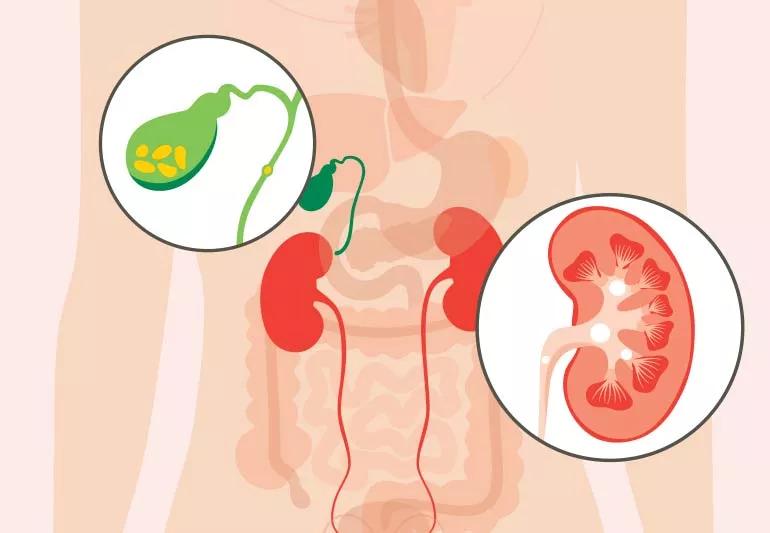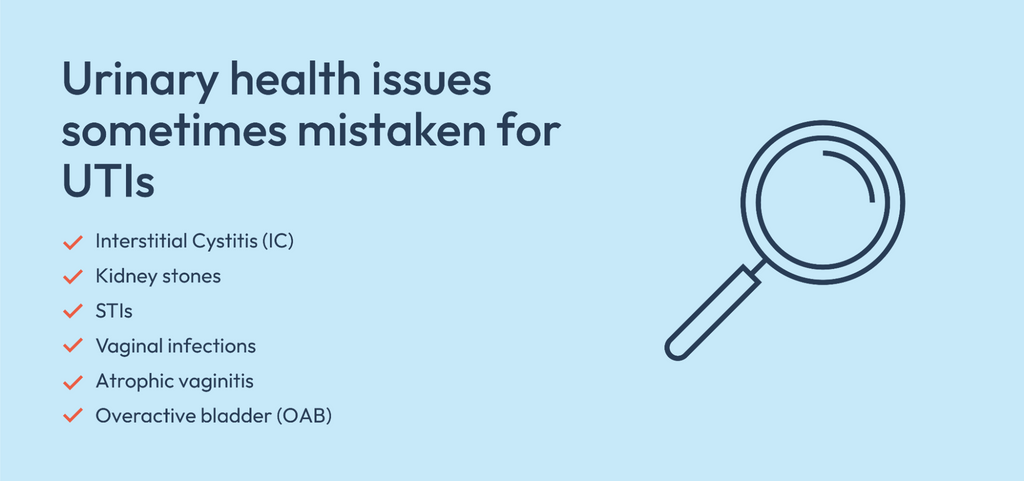Kidney Stones vs UTI: Important Details on Treatment Alternatives and Prevention
Kidney Stones vs UTI: Important Details on Treatment Alternatives and Prevention
Blog Article
Recognizing the Secret Differences In Between Kidney Stones and Urinary System System Infections: A Comprehensive Summary for Clients
Comprehending the differences in between kidney stones and urinary tract infections (UTIs) is necessary for people that might be experiencing comparable signs and symptoms yet encounter significantly various wellness obstacles. While both problems can show up pain in the reduced abdominal area or back, their underlying causes, diagnostic approaches, and treatment methods deviate significantly. A nuanced understanding of these distinctions not just help in precise self-assessment however also informs discussions with healthcare service providers. As we check out these vital elements, it ends up being clear that acknowledging the distinct characteristics of each problem can greatly affect individual results. What may be the very best method to dealing with these distinctions?
Overview of Kidney Stones
The formation of kidney stones, a frequently incapacitating and painful condition, highlights the essential importance of preserving renal wellness. The key kinds of kidney stones include calcium oxalate, calcium phosphate, uric acid, struvite, and cystine stones, each with distinct reasons and threat aspects.
Several factors contribute to the development of kidney stones. In addition, metabolic problems and specific medical conditions may predispose people to stone formation.
Signs of kidney stones can include extreme flank hematuria, pain, and nausea, which frequently prompt immediate clinical examination. Treatment options differ, varying from enhanced fluid consumption and nutritional adjustments to medical treatments such as lithotripsy or medical removal, depending on the size and area of the stones. Comprehending these aspects is essential for effective avoidance and administration.
Summary of Urinary System Infections
Urinary system system infections (UTIs) represent a typical yet significant health and wellness problem, impacting millions of people annually. These infections happen when microorganisms enter the urinary system, which consists of the kidneys, ureters, bladder, and urethra.
The threat factors for developing a UTI include sexual activity, certain types of birth control, urinary retention, and a history of previous infections. Straightforward UTIs are normally limited to the bladder and are extra typical in healthy and balanced individuals, while complex UTIs may include the kidneys and happen in those with underlying health and wellness problems.
Prompt diagnosis and treatment are vital to stop difficulties, such as reoccurring infections or kidney damage (Kidney Stones vs UTI). Typically, UTIs are treated with antibiotics, and preventive measures can be used for those with constant occurrences
Common Symptoms Comparison
Signs of urinary system infections and kidney stones can commonly overlap, leading to confusion in medical diagnosis. In contrast, kidney stones tend to trigger severe, sharp discomfort that radiates from the back to the lower abdominal area and groin, typically defined as colicky pain.
Furthermore, UTIs might be come with by fever and chills, especially in a lot more extreme instances, while kidney stones can lead to nausea and vomiting due to intense pain. While discomfort throughout peeing is a hallmark of UTIs, kidney stones generally provide with even more severe discomfort episodes, which might go and come.
Medical Diagnosis Approaches
Just how can healthcare professionals accurately distinguish between kidney stones and urinary tract infections? The diagnostic process begins with a detailed clinical background and a thorough testimonial of the person's signs and symptoms. Medical professionals often perform a checkup, which may reveal tenderness in the abdominal area or flank area, leading the analysis pathway.
Lab tests play a vital duty in comparing these 2 problems. Kidney Stones vs UTI. A urinalysis can recognize the existence of blood, crystals, or microorganisms, which are indicative of either condition. In cases of urinary system infections, the urinalysis may show a substantial presence of white blood cells and nitrites, while kidney stones might offer with certain crystals
Imaging studies, such as abdominal ultrasound or computed tomography (CT) scans, are vital for visualizing kidney stones. These imaging techniques allow doctor to evaluate stone dimension, area, and potential obstructions in the urinary system system. On the other hand, urinary system system infections typically do not require imaging unless complications are suspected.
With each other, these diagnostic methods equip healthcare experts to precisely set apart and diagnose between kidney stones and urinary see this here system system infections, making sure that patients get suitable care and monitoring.
Treatment Alternatives and Avoidance
While both kidney stones and urinary tract infections (UTIs) call for prompt therapy, their administration methods differ considerably.
The treatment for kidney stones typically includes pain administration, hydration, and in many cases, medical treatments such as extracorporeal shock wave lithotripsy (ESWL) or ureteroscopy to eliminate or damage down stones. Individuals are regularly suggested to enhance fluid consumption to help with stone flow and minimize reappearance. Nutritional modifications might also be essential, relying on the stone kind.
On the other hand, UTIs are largely treated with anti-biotics to eradicate the microbial infection. The certain antibiotic suggested relies on the germs recognized and neighborhood resistance patterns. Added steps, such as raised liquid consumption and urinary analgesics, may aid ease signs and symptoms.
Avoidance techniques differ too; for kidney stones, maintaining ample hydration and sticking to nutritional constraints can be reliable. For UTIs, precautionary methods consist of correct health techniques, urinating after sexual intercourse, and perhaps preventative antibiotics for persistent infections. Comprehending these treatment and prevention modalities is crucial for efficient management and to lessen the danger of complications connected with both problems.
Final Thought

Comprehending the distinctions in between kidney stones and urinary system tract infections (UTIs) is important for clients who might be experiencing More about the author comparable symptoms yet encounter vastly different health challenges. The primary kinds of kidney stones consist of calcium oxalate, calcium phosphate, uric acid, struvite, and cystine stones, each with unique causes and threat factors.

Report this page